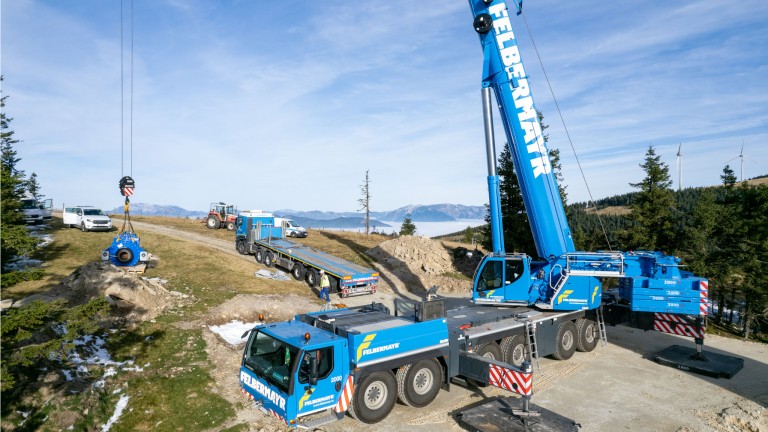Windy locations are great for operating wind turbines. But strong winds make erecting new wind turbines a challenge. These strong winds also create challenges when repairing old turbines that need new rotors, gearboxes, and other components.
Despite the gusty conditions present at a wind farm in Styria, Austria, Felbermayr deployed a Liebherr LTM 1300-6.3 mobile crane to tackle the job. The mobile crane helped enable the precise replacement of a gearbox on an 18-year-old wind turbine. This defective gearbox on the Steinriegel wind farm was located on a mountain ridge at an altitude of almost 1,600 metres.
Liebherr’s mobile cranes equipped with a 90-metre boom come with WindSpeed load charts for conditions with high wind speeds. If the wind speed measured on the crane’s boom exceeds the set table wind speed during a job, the crane operator can switch to a lifting capacity table with a higher maximum wind speed so that, ideally, they can continue the work.
These WindSpeed load charts came in handy for Felbermayr who, despite gusts of up to 13 metres per second.
“As the day went on, the gusts got stronger and stronger and I switched straight to the wind chart,” reports Robert Fuhrmann, who operates the 6-axle crane for Felbermayr. “I configured the load chart, which allows me to work at wind speeds of up to 13.4 metres per second.”
As a rule, the lifting capacities of cranes are calculated for speeds of up to nine metres per second. However, Liebherr has extended this range with the adapted WindSpeed load charts. During pure telescopic operation of LTM cranes, lifting work at wind speeds of up to 15.6 metres per second is possible.
Read the full article here

